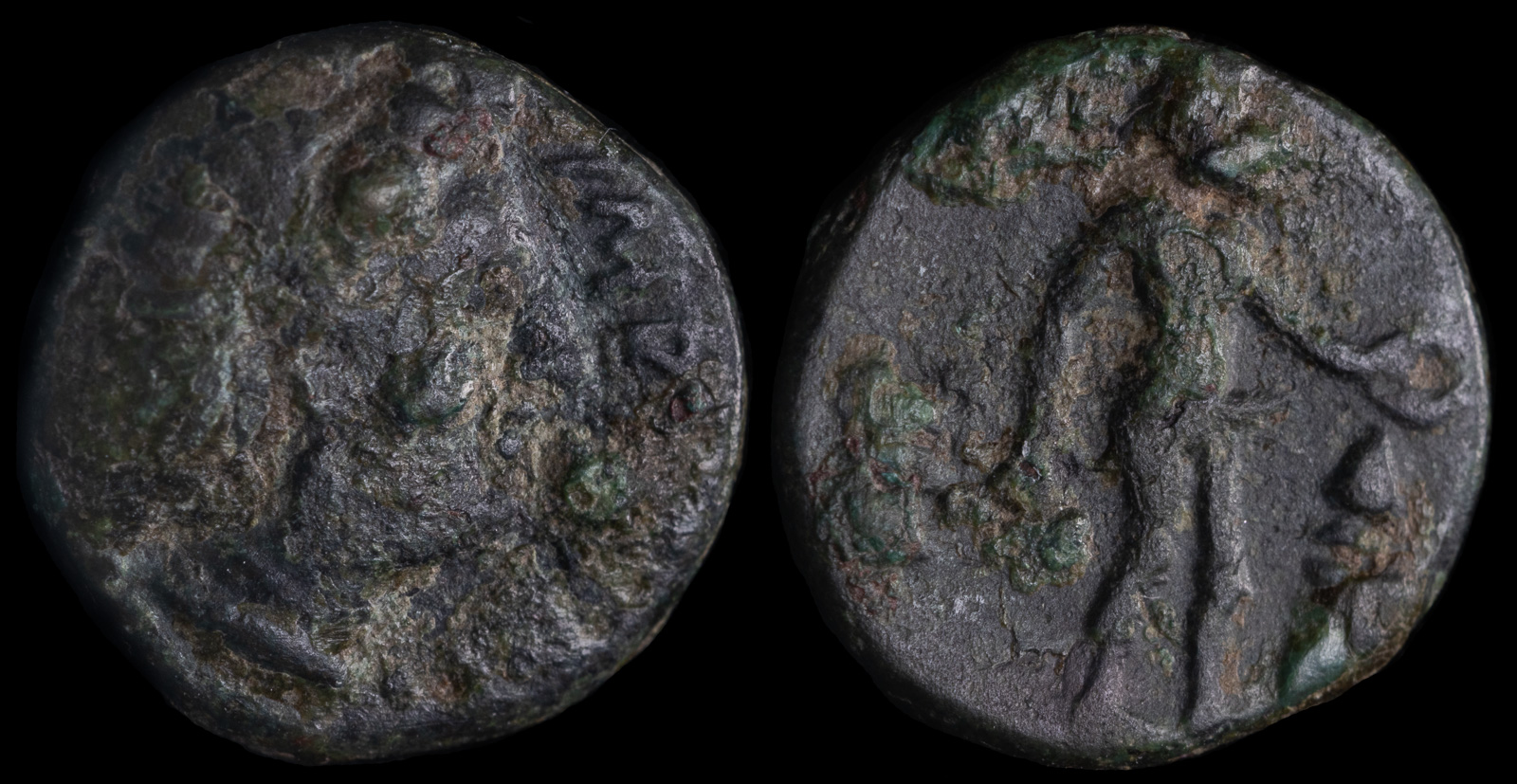
Thrace, Imbros
Circa 350-300 BCE
Ae 11mm 1.13g
Obv: IMBPOY. Female head right.
Rev: Ithyphallic Orthanes right, holding branch and phiale; thymiaterion to right.
HGC 6, 277
Imbros is the largest island in Turkey and was mentioned in Homer, since between Imbros and Samothrace lived Thetis, the mother of Achilles. The stables of Pegasos were also betwen Imbros and Tenedos. The island is also mentioned several other times in the Iliad, for example when its king pays the ransom for Lykaon and restores him to his father, Priam.
Imbros, like nearby Lemnos, was sacred in ancient times to Hephaistos. During the Peloponnesian War, Imbros was allied with Athens, and many of its populace were in fact citizens of Athens. Between 357-355 BCE, it was attacked by Chios, Rhodes, and Byzantion due to its alliance with Attica.
The island had its own form of mysteries – similar to those at Eleusis – but nearly nothing is known about them.
Orthanes, who is depicted on this coin, was the daughter of Hephaistos and a nymph. She was considered a rustic fertility spirit.
Otanes, satrap of Phrygia, captures Antandros, Lamponeia, Imbros, Kalchedon, and Hephaistia and Myrina on Lemnos.
Athens founds a colony on Imbros.
The Battle of Sphacteria between Athens and Sparta is fought at the entrance to the Bay of Pylos, resulting in an Athenian victory. Ainos, Imbros, and the cities of Lemnos (Myrina, Hephaistia) provide support.
Eresos, Byzantion, Chios,Mytilene, Methymna, Rhodes, Thebes, Korkyra, Eretria, Kios, Samos, Naxos, Andros, Myrina (Lembos), Hephaistia, Imbros, and Thasos join the Second Athenian League, reaffirming its alliance with Athens in response to the growing threat of Persian interference and internal Greek conflicts.
355 BCE
Antigonos Monophthalmos gives Athens grain and timber and removes his garrison from Imbros, giving the island back to Athens.